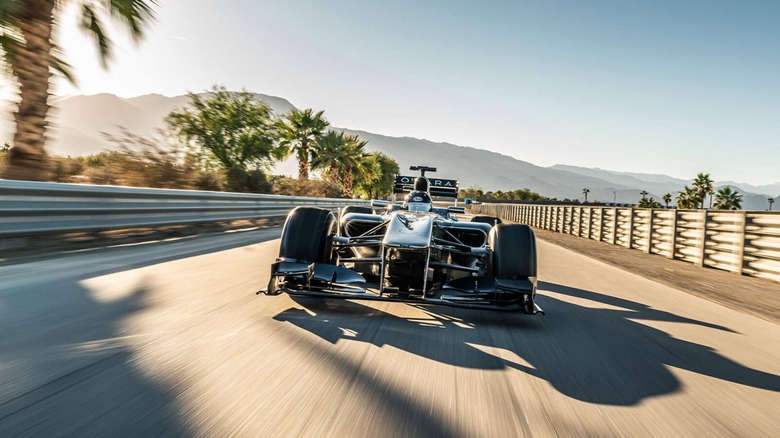Startup Tames Formula 1 Cars For Billionaires Too Scared To Drive The Real Thing
Almost every race fan out there thinks that, given the chance, they could set an impressive lap time in a historic race car. In actual fact, vintage Formula 1 cars are a nightmare to get under control, so we'd probably all spin on the first corner if we could even make it off the line without stalling. That's not the case if you're a billionaire, however, as you can buy a classic F1 car that's had its wings clipped so you won't need oodles of talent to lap your favorite race track.
The world's billionaires love snapping up vintage race tech and using it for their own pleasure, but when it comes to classic F1 machinery they usually just buy classic cars to stare at or hide away in dusty garages. That could be because they're scared it'll lose value, worried meeting their automotive hero might not live up to the hype or they might know they don't have the talent to get the most out of the car.
If that's the case, then a British startup may be of interest to your friendly neighborhood billionaire, as it ships actual F1 cars with fewer cylinders and less power so they aren't as scary as their looks might suggest.
The startup is called TDF and it takes a real Formula 1 chassis that was used in at least one grand prix, and then rebuilds it as a track day toy for the rich and famous, according to MotorAuthority.
How does TDF build its F1 racers?
TDF Limited offers a few different build options for its track day monsters, ranging from real race cars that it will maintain and operate for you whenever you fancy a race, right through to custom car builds based on real Formula 1 machinery. It's those models, which it calls TDF One, that are the cars we're excited about.
The build for these machines is documented in a new film released by the company, and it all starts with a legit, F1 chassis, as MotorAuthority explains:
TDF says it hand-selects the cars and conducts thorough inspections, verifying their authenticity and race history before acquiring them. Only cars that have competed in at least one F1 race are chosen. These often come from defunct teams like Marussia but occasionally from active teams such as Sauber.
Once TDF gets its hands on the old car's base, it starts building it up to their customer's dream specs. This can include bespoke liveries and even a custom DRS system that will close whenever the driver puts in any steering input.
The aerodynamics also remain largely unchanged from the race cars, meaning the TDF One can produce as much as 3,000 pounds of downforce when running at full tilt. In these cars, however, the power unit that takes you up to full tilt is one of the few major downgrades compared with a real F1 racer.
What powers the TDF One?
The biggest difference you'll spot between the TDF One and a 2013 Marussia Formula 1 car is the power unit. Instead of a roaring V8 from Cosworth, the TDF cars are fitted with a 1.8-liter turbo-four that the company developed in house, as MotorAuthority explains:
With years of experience running historic F1 cars for private owners, TDF has redesigned many of the fragile components and intricate operating systems typical of F1 cars, making them more durable and reducing the need for frequent servicing or trackside assistance. This includes the power unit—TDF installs its own 1.8-liter turbo-4, which eliminates the need for complex pre-heating procedures and starts at the push of a button. It's mated to a 6-speed sequential gearbox. Power output ranges from 450 to 600 hp, with a rev limit capped at 8,500 rpm for longevity. Components such as the chassis, suspension, and bodywork remain original. Most of the aerodynamics are also retained, including the DRS, though on the TDF it's designed to automatically close if the driver makes any steering or braking inputs.
While the new car's engine might make around 300 horsepower less than the 2.4 liter Cosworth engine, they're no slouch. TDF says the racers will hit speeds north of 200 miles per hour and will pull some serious Gs when you turn into a corner on your favorite race track.
The biggest advantage of the engine swap comes down to maintenance and reliability, with TDF offering the car's with a 1,900 mile warranty. That's equivalent to about 10 complete F1 grand prix distances, or half a season in the sport. In contrast, F1 drivers in 2013 could use eight engines across 19 races.
Still, I dread to think what the service bill would be after completing 1,900 miles behind the wheel in one of these.

